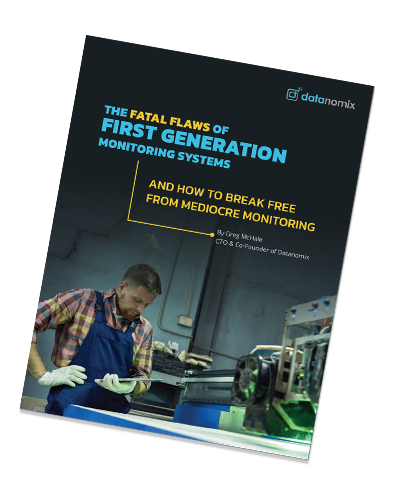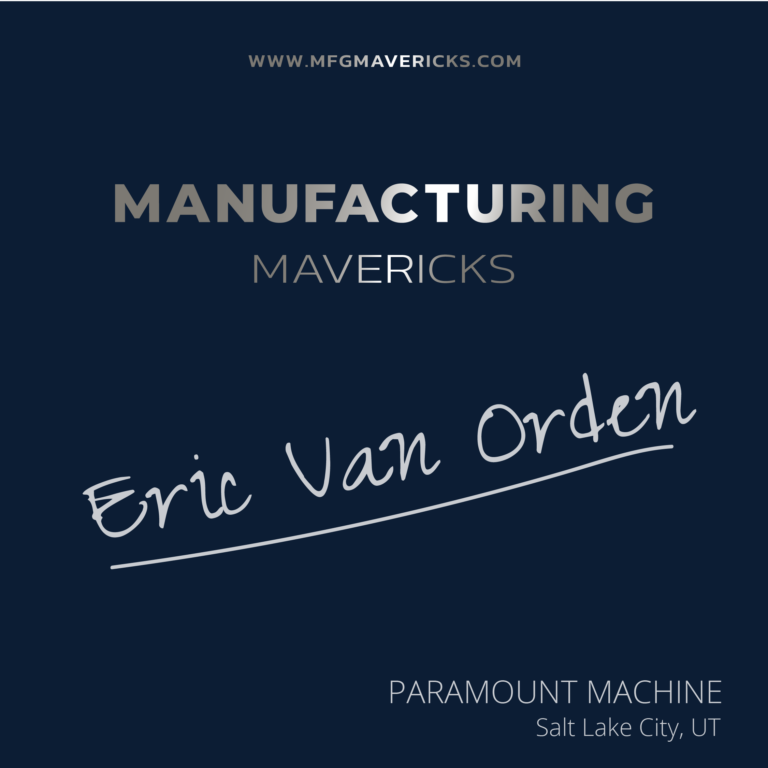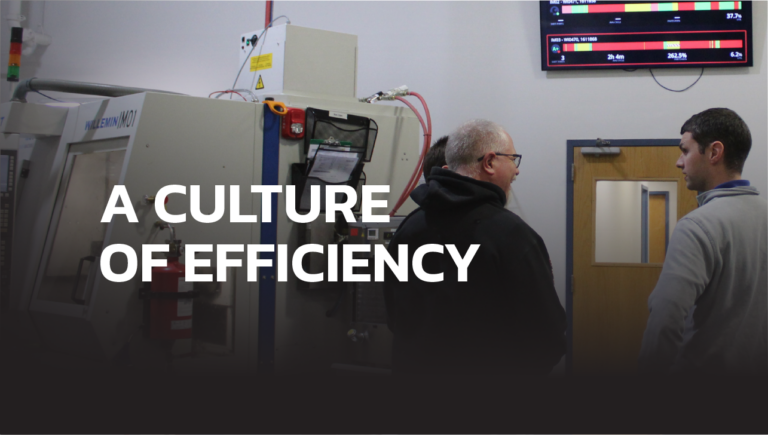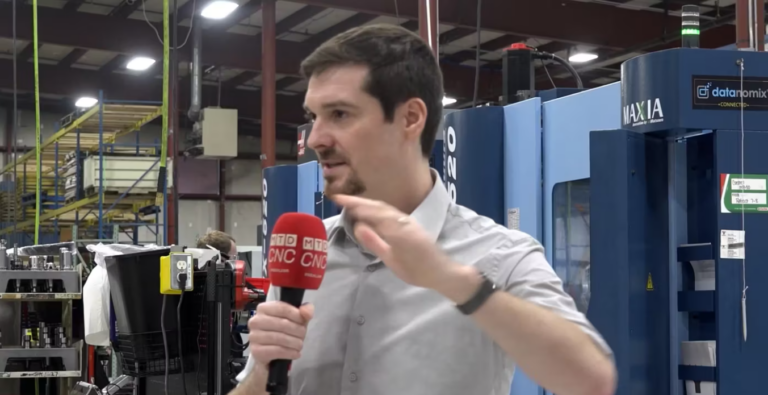Feel Let Down by Your Production Monitoring System? It’s Time for an Upgrade
There are many reasons manufacturers don’t understand the potential of modern machine monitoring. Greg McHale boils it down to the most common answers and how negative experiences have set expectations of the entire industry.
In a recent podcast with Tony Gunn from MTDCNC, Tony asked us a simple, but powerful, question:
“Why aren’t some people still getting how significant machine monitoring can be?”
There are many reasons CNC manufacturers don’t understand the potential of modern machine monitoring, but I’ll boil it down to the most common answer we’ve heard. The primary reason manufacturers are dissatisfied with their production monitoring is their first-generation monitoring systems did not deliver on their promises. These negative production monitoring experiences have set the entire industry’s expectations.
If you’ve evaluated production monitoring systems in the past, they fallen into one of two camps:
- Too simple to be meaningful
(hint: they focus only on utilization and red/yellow/green) - Too complicated to be sustainable
(hint: operator input and data crunching required)
You are paying to collect machine status and utilization data in the “too simple to be meaningful” camp. These simple systems answer the question, “When am I running and not running?” For some manufacturing operations, utilization alone can help you find efficiencies. But for job shops and other manufacturers with diverse machinery making complex parts, utilization is just a number that can be recorded but doesn’t change anything about how you run your business
The “too complicated to be sustainable” systems are a natural evolution of the “too simple” systems. “OK, the machine isn’t running – well, why?” The logical extension of the simple systems is to capture a reason every time the machine goes down. That way, we’ll understand how to make the machine run more.
Sounds good on paper, but you are creating two unfortunate kinks in your process:
- you are asking your operators to do data entry instead of machining while simultaneously asking them to run more machines per person (and fighting a labor shortage).
- you are assuming the data entry will be good enough, contextualized enough, and meaningful enough to help you change your processes.
As discussed in our think piece, The Fatal Flaws of First Generation Monitoring Systems, the insights you are hoping for don’t exist in reason code data. You will learn about natural process variance and maybe find a few outliers. Still, otherwise, you’ll be shown what you already expected: you change tools, your machines get unhappy sometimes, you clear chips, you measure parts, and your team members go to the bathroom.
Beyond these challenges, many first-gen monitoring systems require complex installation, implementation, and integration to get up and running. Weeks to months go by before you see the first piece of data. Once the data is collected, you are expected to spend hours per day going through it to make it meaningful to your day-to-day operations.
In addition, with first-gen systems, your operators need to be trained on yet another system, and if they don’t enter reason codes perfectly throughout the day, your data will be junk. In the best-case scenario, there’s a significant drag on existing resources to make your data useful while still trying to process reports after the fact to find insights in the data. In the worst-case scenario, all you know is the utilization rate of your equipment, which doesn’t help you run the business more efficiently (and profitably).
All that money, all that hardware, all that time, and you still need to pour man-years of energy into making the data helpful to you daily. It’s no surprise folks feel let down by various monitoring experiences.
Absolutely No Operator Input™
Our “no operator input” philosophy is squarely rooted in this significant first-gen production monitoring design flaw. At Datanomix, our job is not just to collect data and hope for the best. The job of next-gen production monitoring is to collect, analyze, and immediately present meaningful data. What it says about your job, setup, cycle times, profitability, and planning must be discernible in a split second with no work on your part.
If your definition of monitoring doesn’t rise to this standard, you’re not looking at a monitoring product—you’re looking at a data collection product. The world has moved on from those.
What You Should Expect Today
But that’s enough of a history lesson. Let’s talk about what you should expect from a monitoring system today:
It should install and onboard seamlessly, with nearly instant access to your data.
It should automatically determine performance—what job you are running, how the jobs are performing, and how you should be performing, all with no effort or input required at all.
It should broadcast how you are performing to your entire team and easily indicate where you need to apply effort to improve the day in progress.
It should automatically roll up your completed job runs into a simple post-mortem analysis that shows how the job ran, how the run compares to your typical run, and which days were good or bad.
It should automatically assess your performance over time on every job you run and show you which processes present the greatest opportunities for profit improvement.
If you’ve been burned or disappointed by prior monitoring systems, we understand.
We’re purpose-built from the ground up to address the flaws, alleviate the complexities, and eliminate the letdowns of the monitoring systems of the past. We can’t change what happened before, but we’re delivering the future you expected when you envisioned what monitoring would do for your people, profits, and productivity.
Let us help you. Contact us today to request a demo and see what it’s like to have a next-generation production monitoring solution like Datanomix.







